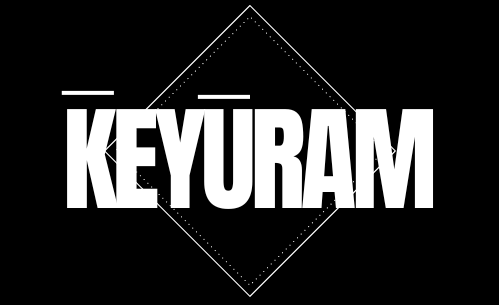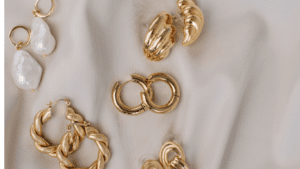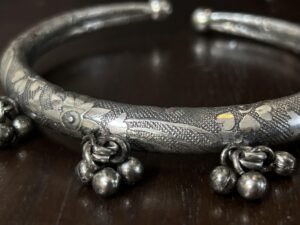Introduction
Festivals are grand celebrations in India, characterized by a riot of colors, music, and, of course, exquisite jewellery and ornaments. Indian jewellery has long been associated with elaborate patterns, priceless metals, and precious stones. However, because of its affordability, adaptability, and constantly changing styles, imitation jewellery has become increasingly popular in recent years. This blog presents the popular imitation jewellery looks that draw a lot of attention at Indian festivals ie. Diwali.
Jewellery’s Significance in Indian Culture.
In India, jewellery holds great cultural and emotional importance. It is more than just a piece of clothing; it represents tradition, prosperity, and blessings. In Indian culture, jewellery is valued in the following ways:
Bridal Adornments
Newly brides are decked out in an abundance of jewellery, ranging from necklaces to anklets, for their extravagant wedding celebrations. These items are thought to represent the bride’s new life in addition to enhancing her beauty.
Religious and Spiritual Significance
India has numerous festivals and rituals where jewellery is offered to the gods. As part of their religious practices and beliefs, people wear particular kinds of jewellery.
Symbol of Prosperity
Jewellery is frequently regarded as an investment. Heirloom items are passed down from one generation to the next by families as a symbol of wealth and heritage.
Fashion and Self-Expression:
Indians nowadays view jewellery as a form of fashion and self-expression, even though tradition still plays a significant influence in jewellery selection. It can be worn every day to improve one’s personal style rather than just for special occasions.
Imitation jewellery has become a popular and affordable choice for Indians due to the rising demand for jewellery for both traditional and modern occasions. Let’s explore the newest trends in imitation jewellery that are popular in India for weddings and festivals.
Temple Jewellery: Elegance with a Divine Touch
Temple jewellery is a unique style that perfectly captures the spirit of Indian culture and craftsmanship with its heavenly aura and classic appeal. This kind of jewellery, which draws inspiration from the elaborate patterns seen in South Indian temples, has made a name for itself as a sophisticated yet heavenly-looking accessory.
Temple dancers and royal courts in ancient South India are the sources of temple jewellery. These beautiful objects were made to adorn gods, elevating the religious significance of temple rites. Temple jewellery changed over time, embracing elaborate designs, religious symbolism, and fine craftsmanship.
The use of divine symbols, such as Lord Ganesha, Lord Krishna, and the peacock, which have profound cultural and spiritual meaning, is one of the distinguishing characteristics of temple jewellery. Brides choose temple jewellery with great reverence during their weddings because of these motifs, which give the jewellery a sense of sacredness.
Temple jewellery is distinguished by its antique finish, which is frequently the result of painstaking craftsmanship. A timeless charm that complements traditional ensembles such as Kanjivaram saris and classical dance costumes is imparted by the aged, matte texture.
Temple jewellery is deeply associated with South India, but its appeal has spread beyond borders, enthralling both jewellery designers and connoisseurs. These days, famous jewellers and crafts people’ collections feature temple-inspired pieces that seamlessly blend tradition and modernity.
Temple jewellery still embodies the spirit of culture and divinity and is a symbol of elegance. Temple jewellery bridges the gap between the spiritual and the earthly, and is a timeless symbol of elegance with a divine touch, whether it is worn by a bride on her special day or to enhance the atmosphere of a traditional dance performance.
Shop Keyuram Gold Peacock Motif Temple Necklace Set
https://keyuram.com/product/gold-peacock-temple-necklace-set/
Fusion Jewellery: The Blend of Tradition and Modernity
Fusion jewellery is a testament to the creative harmony between tradition and modernity in the ever-evolving world of fashion. This distinctive jewellery style skillfully combines the modern flair of modern design with the time-honored aesthetics of traditional jewellery.
Fusion jewellery is a delightful amalgamation of various elements; it frequently blends modern gemstones, enameling, and inventive crafting techniques with materials like gold, silver, or antique metals. The outcome is an impressive collection of works that will appeal to individuals who want to embrace the vitality of the modern world while also celebrating their cultural heritage.
Fusion jewellery is remarkably versatile, which is one of its remarkable qualities. These works are ideal for today’s global citizens because they so skillfully cross cultural and temporal boundaries. For instance, a fusion necklace might have an elegant, minimalist chain and a traditional Indian pendant, making it suitable for both traditional saris and modern gowns.
India’s inclusive and diverse culture is embodied in its fusion jewellery. It is a reflection of the changing tastes of a contemporary, global society as well as a celebration of traditional craftsmanship. Fusion necklaces, bangles, and earrings are just a few examples of the exquisite representations of India’s capacity to honor its rich legacy while embracing modernity.
Fusion jewellery helps wearers to connect the dots between the classic elegance and modern aesthetics in a world where clothing is a dynamic way to express one’s identity. It celebrates the finest aspects of both worlds in a single piece of jewellery, and is the ideal example of the phrase “old meets new.”
Shop Keyuram Crescent Moon design Contemporary Necklace
https://keyuram.com/product/crescent-moon-design-contemporary-necklace/
The Enchanting Tradition of Indian Anklets: Pajeb
Anklets—Hindi for “pajeb”—have a unique place in the intricate web of Indian customs and culture. For centuries, women all over the Indian subcontinent have adorned their ankles with these elaborate foot ornaments, which are an essential part of their cultural legacy. Beyond their aesthetic appeal, pajeb have significant cultural and symbolic meaning. Pajebs are traditionally made of a variety of materials, such as gold, silver, or even beads. They are available in a wide range of complex patterns and styles. They frequently have tiny bells attached to them, which tinkle melodiously as the wearer moves, giving each step a musical quality. This charming jingle is not just an auditory delight but also serves a practical purpose, alerting others to the presence of the wearer, especially in the context of traditional dance forms like Kathak and Bharatanatyam.
Beyond just their melodic appeal, pajeb have deeper meaning. Anklets are very important in Indian weddings because they represent a woman’s marital status. The groom ceremoniously places them on the bride’s ankles, and brides frequently wear them as a symbol of their union. Certain cultures hold the belief that the sound of tinkling wards off evil spirits.
In addition to their significance to culture, pajebs are a daring fashion statement. They can be combined with modern fusion clothing or worn with traditional outfits like salwar kameez, saris, and lehengas to create a tasteful fusion of the past and present.
Even in a world where style is always changing, traditional Indian anklets, or pajebs, are a classic symbol of grace and history. They accentuate a woman’s natural beauty while also connecting with the timeless melodies of Indian culture, adding to the rich tapestry of tradition with each step.
Shop Keyuram Silver Oxidised Pajeb
https://keyuram.com/product/keyuram-silver-oxidised-pajeb-anklets-set-of-2/
Lac Bangles: A Tapestry of Color and Tradition
With their rich colors and elaborate patterns, lace bangles are highly prized in the world of Indian jewellery. These bangles, which are made of lac, a natural resin made from the secretions of tiny insects, are more than just decorative accents; they’re a fascinating fusion of craftsmanship and tradition.
India has a centuries-old custom of producing lac bracelets, with Rajasthan serving as a major center for this industry. The pliable lac is expertly shaped by artisans into bangles in a variety of sizes and forms, and they even embellish them with tiny metalwork, mirrors, and vivid colors. The outcome is a striking assortment of bangles that brilliantly capture India’s rich cultural diversity.
The vibrant range of colors that distinguishes lac bangles. These bangles are available in every color of the rainbow, ranging from calming pastels and earthy tones to vivid reds and blues. Every hue has a meaning of its own; red, for example, represents marital bliss, while green is frequently connected to wealth.
Lac bracelets are useful accessories that go beyond decoration. They are essential to Indian rituals, celebrations, and traditions. Lac bangles are especially beautiful at weddings, where brides wear stacks of these elaborate accessories as a representation of their wealth and marital status.
Lac bracelets are not only symbolic of Indian culture but also a demonstration of the skill of Indian artisans. These items are frequently handmade, exhibiting the dexterity and imagination of craftspeople who have developed their abilities over many generations.
Lac bracelets are still a popular option today, appearing on women’s wrists for daily wear as well as special occasions like weddings. They represent a tradition that is both timeless and enthralling, and they act as a vivid reflection of India’s cultural tapestry. Lac bangles are more than just jewellery; they’re an ode to Indian art, culture, and the rainbow of hues that characterizes the country.
Shop Keyuram Grey Lac Bangles (set of 4)
https://keyuram.com/product/stunning-grey-lac-bangle-set-set-of-4-bangles-with-intricate-design/
Kundan Maangtika: The Crown of Elegance
An amazing piece of Indian jewellery called a maangtika is worn on a woman’s forehead, giving her appearance a touch of class and custom. The Kundan maangtika is the pinnacle of regal charm and classic beauty among the various maangtika styles.
The origins of the exquisitely detailed and brilliantly crafted kundan jewellery can be traced back to the royal courts of Gujarat and Rajasthan. The term “Kundan” describes the age-old method of encasing priceless gemstones in gold foil to produce an alluring iridescent effect. This technique gives all Kundan jewellery, including maangtikas, a unique, ethereal quality.
Usually, the Kundan maangtika is made with an elaborate pendant in the center that has the Kundan setting on it. This pendant can be embellished with enamel work, vibrant gemstones, and shimmering uncut diamonds to create a symphony of colors and textures. The pendant gives the wearer’s face a hint of majesty as it is attached to a thin chain that falls elegantly along the hairline.
The ageless allure of Kundan maangtika is enduring. With its regal accent, it is the ideal option for brides on their wedding day. Furthermore, it exhibits versatility and adaptability by looking good with both contemporary fusion wear and traditional Indian attire like saris and lehengas.
Kundan maangtikas are more than just jewellery; they are representations of Indian jewellery’s ageless elegance, artistry, and cultural legacy. They are much more than just accessories thanks to their timeless appeal; they are the pinnacle of elegance, enhancing each wearer’s grace and beauty.
Shop Keyuram Kundan Maangtika
https://keyuram.com/product/exquisite-kundan-maangtika-royal-elegance-for-special-occasions/




